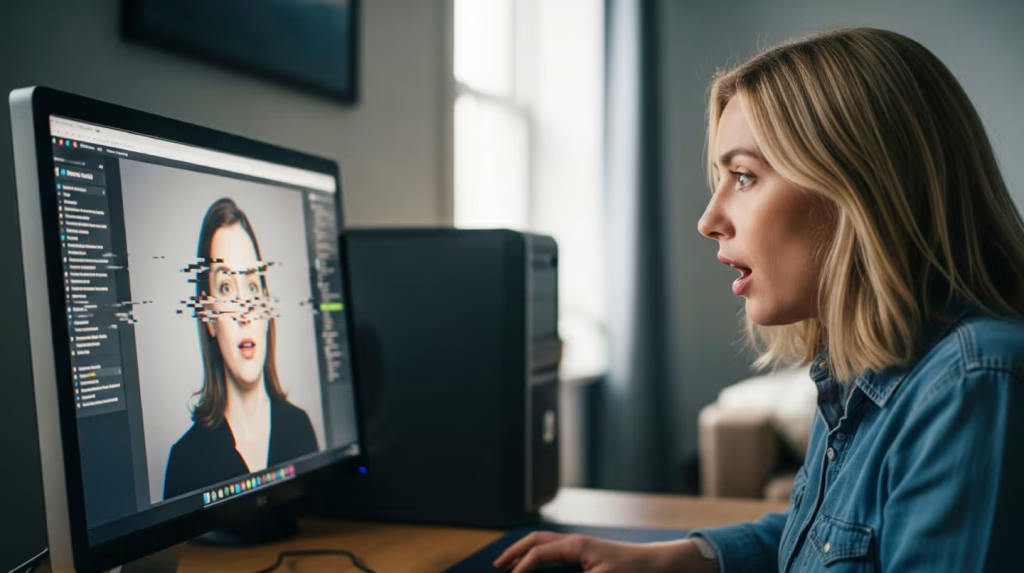One of the most alarming outcomes of this technological advancement is the rise of deepfakes and AI-generated media hyper-realistic fake videos, images, and voices that can convincingly imitate real people. In 2025, artificial intelligence has become an integral part of our daily lives, driving innovation in everything from automation to creativity. However, as AI’s capabilities grow, so do its potential risks.
While these technologies can be used for entertainment, education, and artistic creativity, their misuse has raised serious concerns about truth, trust, and digital safety. Understanding the hidden dangers of deepfakes is essential in a world where seeing is no longer believing.
Table of Contents
What Are Deepfakes?
Deepfakes are synthetic media created using deep learning techniques specifically generative adversarial networks (GANs). These systems analyze thousands of images or voice samples of a person to generate new, realistic content that mimics their appearance or speech.
In simple terms, AI can now produce a video of someone saying or doing something that never actually happened. The result is often so convincing that even experts struggle to identify whether it’s real or fake without specialized tools.
Initially, deepfakes emerged as a form of digital experimentation, used by researchers to demonstrate the power of machine learning. But over time, they’ve been weaponized for misinformation, scams, and identity theft becoming one of the most pressing cybersecurity threats of our era.
The Growing Threat of AI-Generated Media
AI-generated media extends beyond deepfake videos. It includes AI-created news articles, social media posts, cloned voices, and synthetic photographs that can easily spread misinformation. In 2025, with tools like ChatGPT, Midjourney, and other generative AI models widely accessible, creating realistic fake content no longer requires advanced technical skills.
This democratization of AI content creation is a double-edged sword. While it empowers creativity and productivity, it also opens doors for malicious activities such as:
- Political manipulation – spreading fake videos of leaders to influence elections or incite conflict.
- Financial fraud – using cloned voices to trick people into transferring money.
- Corporate espionage – fabricating fake press releases or executive statements to damage reputations or manipulate markets.
- Defamation and harassment – creating false videos or images to harm individuals personally or professionally.
These scenarios illustrate how deepfakes can threaten not just individuals but entire institutions and societies.
How Deepfakes Undermine Trust
Trust is the foundation of communication, journalism, and governance. The spread of deepfakes erodes that trust by making it difficult to distinguish truth from fiction. In a world flooded with manipulated media, the line between reality and fabrication becomes dangerously blurred.
For instance, a deepfake of a world leader declaring war or a CEO announcing a company’s bankruptcy could cause global chaos before the truth is verified. Even if later proven false, the damage to public confidence and market stability could be irreversible.
Moreover, deepfakes are not always used for large-scale deception. Sometimes they’re used to discredit real evidence by claiming that authentic footage is fake a tactic known as the “liar’s dividend.” This phenomenon makes it easier for wrongdoers to deny accountability by blaming AI manipulation.
Personal and Ethical Implications
On a personal level, deepfakes have become tools for cyberbullying, blackmail, and identity theft. Victims often find their faces inserted into fake videos without consent, causing immense emotional and reputational damage.
Ethically, the rise of deepfakes challenges our notions of authenticity and consent. AI can now replicate voices, appearances, and even emotions, raising questions about privacy and ownership of one’s likeness. Should individuals have legal rights to control how their image and voice are used by AI? The global legal system is still catching up to these issues.
Detecting and Combating Deepfakes
As deepfakes become more sophisticated, detecting them requires equally advanced technology. AI itself is now being used to fight back against deepfakes through forensic algorithms that analyze inconsistencies in pixels, lighting, or speech patterns.
Tech companies and research institutions are also developing blockchain-based verification systems that attach digital watermarks or metadata to authentic content, making it easier to verify originality. Social media platforms are implementing stricter content moderation and labeling systems to alert users when AI-generated material is detected.
However, technology alone cannot solve this issue. Public awareness and education play a crucial role. People need to be taught how to verify sources, question suspicious content, and recognize the signs of manipulation.
The Role of Regulation and Responsibility
Governments worldwide are beginning to implement AI accountability laws and deepfake regulations to prevent malicious use. For example, some countries now require explicit consent before creating AI-generated likenesses of individuals, while others impose penalties for distributing harmful synthetic content.
Corporations that develop or deploy AI models are also being urged to take responsibility by ensuring transparency, ethical use, and detection measures in their products.
The Future of Deepfakes: Can We Stay Ahead?
Looking forward, AI will continue to evolve, making deepfakes even harder to detect. However, the same technology that creates the problem also holds the key to its solution. Improved AI detection tools, digital watermarking systems, and enhanced authentication standards will help restore trust in media.
In the long run, society must learn to coexist with synthetic media responsibly. Transparency, critical thinking, and technological literacy will be the strongest defenses against the misuse of AI.
Conclusion
Deepfakes and AI-generated media represent both the brilliance and the danger of modern technology. They showcase how powerful AI has become capable of shaping perceptions and realities with astonishing precision. Yet, they also remind us that with great innovation comes great responsibility. Also Check How Technology Is Revolutionizing Free Education in 2025







1 thought on “Hidden Dangers of Deepfakes – Ultimate Free Guide – 2025”